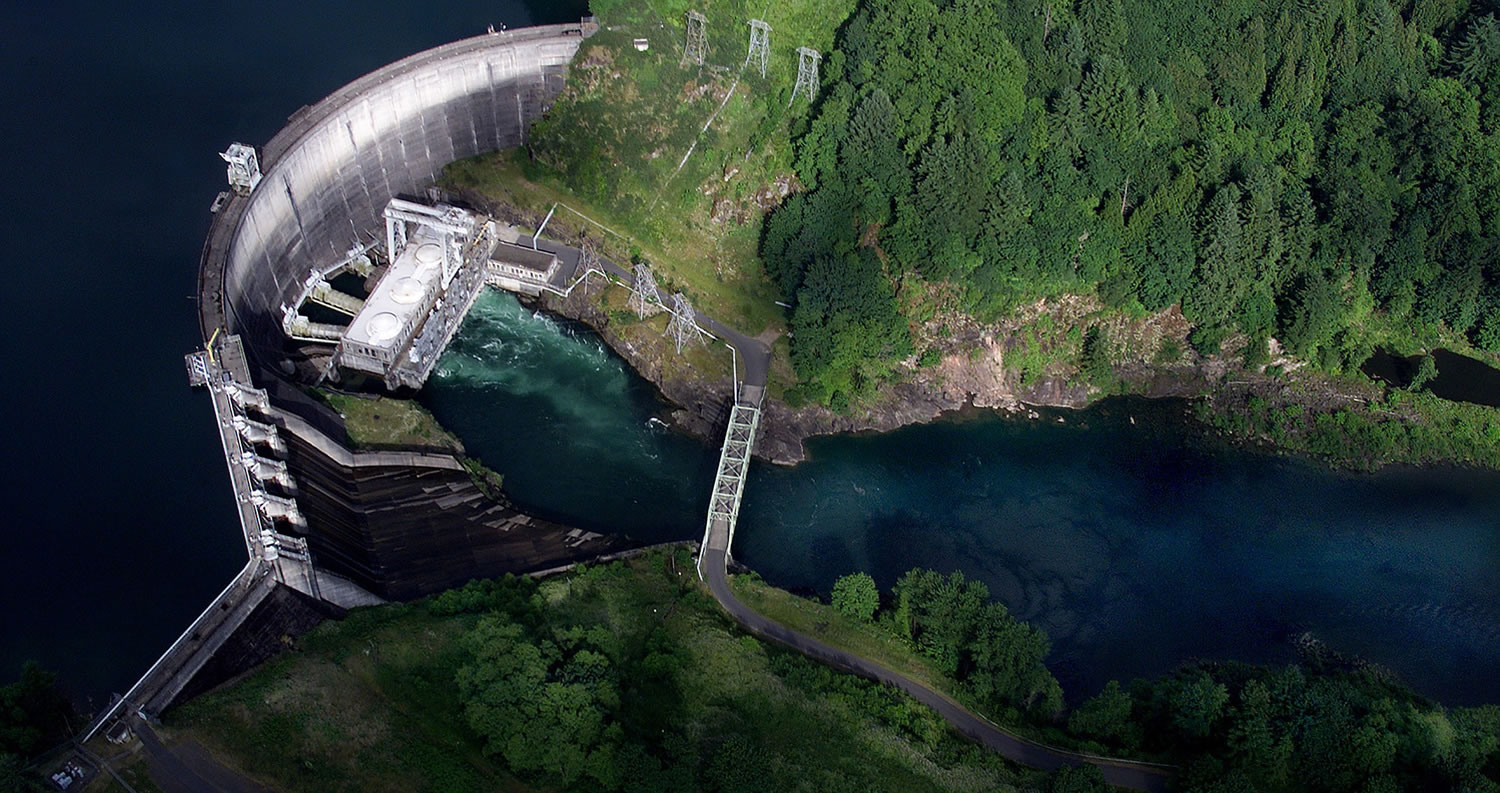Water levels on the North Fork of the Lewis River will drop significantly below Merwin Dam starting Friday as officials try to save enough water to support fish spawning this fall.
The Lewis River Flow Coordination Committee made the decision earlier this month. PacifiCorp, the Portland-based utility that operates Merwin Dam, will drop flows from the facility by about one-third in two steps on Friday and Saturday.
The action comes as a deepening drought reduces stream flows and warms water temperatures across Washington. PacifiCorp hopes to store enough water above Merwin Dam so it can release it and provide critical flows when fall chinook salmon return to spawn downstream.
Water coming into Swift, Yale and Merwin reservoirs from upstream is about 35 percent of normal, and the lowest on record for this time of year. But the North Fork of the Lewis River is far from the only waterway affected by drought this year.
“It’s bad all over the region,” said PacifiCorp spokesman Bob Gravely.
The utility plans to reduce flows below Merwin Dam from 1,200 cubic feet per second to 800 cubic feet per second. That will lower water levels downstream of the structure by about 4 inches, according to PacifiCorp.
Boat ramps on Swift and Yale reservoirs are already closed because of low water. This week’s action could impact additional docks and launch areas below Lake Merwin, Gravely said.
Meanwhile, Washington’s drought shows no end in sight. After cool conditions and rainfall brought brief respite last weekend, another heat wave is expected to envelop the region starting today. The heat will likely exacerbate the low flows and warm water temperatures that already have started to kill hundreds of thousands of fish by some estimates.
At the end of July, many waterways are looking like they normally would at the end of August or even September, said Joe Hymer, a fish biologist with the Washington Department of Fish and Wildlife in Vancouver. With mountain snowpack long gone in most places, the downward trend will continue if conditions don’t change, he said.
“Unless it’s spring-fed, streams are going to continue to get lower, and they’re probably going to continue to get warmer, too,” Hymer said.
State and federal hatcheries have taken some extraordinary steps to try to protect fish from dangerous conditions. Earlier this month, workers completed the relocation of more than 160,000 salmon from Central Oregon to a hatchery in the Columbia River Gorge.
Still, fish and wildlife officials say the Northwest is largely at the mercy of Mother Nature.
“Hope for an early fall rain,” Hymer said.




